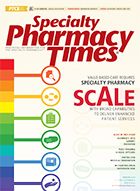Update on Rheumatoid Arthritis
With the introduction of biologics such as Humira, Enbrel, and Remicade to treat RA, prescription costs have steadily increased.
According to the CDC, rheumatoid arthritis (RA) is an autoimmune and inflammatory disease in which the immune system mistakenly attacks healthy cells, causing inflammation in the affected parts of the body.
RA mainly attacks the joints—usually, many at once—in the hands, wrists, and knees. In an RA-afflicted joint, the lining becomes inflamed, causing tissue damage that can result in long-lasting or chronic pain, loss of balance, and deformity, according to the Arthritis Foundation.
These following joint symptoms are clues to RA:
- Joint pain, tenderness, swelling, or stiffness lasting 6 weeks or longer
- Morning stiffness that lasts 30 minutes or longer
- Multiple joints affected
- Small joints (wrists, certain joints of the hands and feet) affected
- Same joints on both sides of the body affected
- Same symptoms on both sides of the body (ie, on both hands or both knees)
- Weight loss
- Fever
- Fatigue
- Weakness
Although the culprit behind the development of RA is not fully understood, investigators have determined that an abnormal immune system response is a vital factor in inflammation and joint damage. Studies show that individuals who have a specific genetic marker known as the HLA shared epitope have a 5-fold increased chance of developing RA than those who lack the genetic marker. Investigators also have learned that the HLA genetic site controls immune responses.
Other genes associated with the development of RA include STAT4, which is involved in the regulation and activation of the immune system; TRAF1 and C5, which play a role in chronic inflammation; and PTPN22, which has been linked to RA development and progression. Importantly, having or lacking these genes does not necessarily mean an individual will develop or be safe from developing RA.
RA predominantly affects females, with nearly 3 times as many women as men among the approximately 1.5 million people in the United States diagnosed with RA. The disease typically manifests in women between ages 30 and 60 years; among men, it typically appears later in life. Although familial history has been found to increase the chance of developing the disease, most people with RA do not have any family history of it, according to the Arthritis Foundation.
RA is manageable, however, through medication and self-care. The disease is commonly treated with disease-modifying antirheumatic drugs, which inhibit disease activity and prevent joint deformity, with biologic drugs acting as an effective second-line treatment, according to the CDC. Additionally, patients with RA can employ self-management strategies that have been found to limit pain and disability.
Several policy issues are intertwined with RA:
- In 2015, the District of Columbia passed the Specialty Drug Copayment Limitation Act, which caps specialty drug co-payment or coinsurance out-of-pocket costs at $150 for up to a 30-day supply or $300 for a 90-day supply.
- HR 2077, the Restoring the Patient’s Voice Act of 2017, seeks to require a group health plan to establish an exception to medication step-therapy protocols in specified cases.
- HR 2999, the Patients’ Access to Treatments Act of 2017, seeks to establish cost-sharing limits for health plans that cover prescription drugs and use a formulary or another tiered cost-sharing structure.
Lastly, with the introduction of biologics such as Humira, Enbrel, and Remicade to treat RA, prescription costs have steadily increased. With this shift, there has been a move toward the treatment of RA with biosimilars in hopes of lowering the overall financial impact to the health care system. On average, biosimilars are 30% less costly than branded biologics. Challenges continue to surround biosimilars, including the pace of litigation between the manufacturers of biosimilars and the originator products, as well as FDA policies such as interchangeability and reimbursement. These key issues must be monitored to determine whether patients with RA will get a cost-effective solution to alleviate this chronic disease. 

